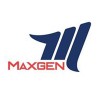
i
nCircle
Tech
Filter interviews by
nCircle Tech Interview Questions and Answers
17 Interview questions
Key concepts of OOP include encapsulation, inheritance, polymorphism, and abstraction, which enhance code reusability and maintainability.
Encapsulation: Bundling data and methods that operate on the data within a single unit (class). Example: A 'Car' class with properties like 'speed' and methods like 'accelerate()'.
Inheritance: Mechanism to create a new class from an existing class, inheriting its attributes and ...
This Java program identifies and prints prime numbers from a given array of integers.
Define a method to check if a number is prime.
Iterate through the array and use the prime-checking method.
Store and print the prime numbers found in the array.
Example input: [2, 3, 4, 5, 6, 7]; Output: [2, 3, 5, 7]
Yes, JavaScript is an asynchronous language.
JavaScript uses callbacks and promises to handle asynchronous operations.
Asynchronous functions allow other code to run while waiting for a response.
Example: setTimeout() function in JavaScript is asynchronous.
To project a point on a line, calculate the perpendicular distance from the point to the line and find the point on the line that is closest to the given point.
Calculate the slope of the line
Find the equation of the line
Calculate the perpendicular distance from the point to the line using the formula |Ax + By + C| / sqrt(A^2 + B^2)
Find the point on the line that is closest to the given point by moving along the pe...
Program to create Fibonacci sequence pyramid
Start by defining the number of rows for the pyramid
Use nested loops to generate Fibonacci numbers for each row
Print the Fibonacci numbers in pyramid format
Binary search has a time complexity of O(log n).
Binary search is a divide and conquer algorithm.
It works by repeatedly dividing the search space in half.
The time complexity is logarithmic because each comparison reduces the search space by half.
It is efficient for sorted arrays or lists.
Balancing work commitments and family obligations requires prioritization and effective communication.
Assess the urgency of the work target: If it's a critical deadline, I may prioritize work.
Communicate with family: I would explain the situation to my family and see if I can attend part of the function.
Consider delegation: If possible, I would delegate some work tasks to ensure both responsibilities are managed.
P...
Function overriding is a feature in object-oriented programming where a subclass provides a different implementation of a method that is already defined in its superclass.
It allows a subclass to provide its own implementation of a method that is already defined in its superclass.
The method in the subclass must have the same name, return type, and parameters as the method in the superclass.
The method in the subclas...
Copy constructor is a special constructor that creates a new object by copying an existing object.
It is used to create a new object with the same values as an existing object.
It takes an object of the same class as a parameter.
It is used to avoid shallow copy issues.
Example: MyClass(const MyClass& obj) { //copy constructor code }
OOP's pillars are Abstraction, Encapsulation, Inheritance, and Polymorphism.
Abstraction: Hiding implementation details and showing only necessary information.
Encapsulation: Binding data and functions together and restricting access to them.
Inheritance: Creating new classes from existing ones, inheriting properties and methods.
Polymorphism: Ability of objects to take on many forms and perform different actions base...
nCircle Tech Interview Experiences
14 interviews found
I applied via Approached by Company and was interviewed in Aug 2024. There was 1 interview round.
(5 Questions)
- Q1. What is vector? How to use it ?
- Ans.
A vector is a dynamic array that can resize itself automatically when elements are added or removed.
Vectors are part of the C++ Standard Template Library (STL).
They provide similar functionality to arrays but with additional features like automatic resizing.
Vectors can be accessed using index notation and have methods for adding, removing, and accessing elements.
Example: vector
numbers = {1, 2, 3}; numbers.push_back(4)...
- Q2. How to project point on line ?
- Ans.
To project a point on a line, calculate the perpendicular distance from the point to the line and find the point on the line that is closest to the given point.
Calculate the slope of the line
Find the equation of the line
Calculate the perpendicular distance from the point to the line using the formula |Ax + By + C| / sqrt(A^2 + B^2)
Find the point on the line that is closest to the given point by moving along the perpend...
- Q3. Is JavaScript asynchronous language?
- Ans.
Yes, JavaScript is an asynchronous language.
JavaScript uses callbacks and promises to handle asynchronous operations.
Asynchronous functions allow other code to run while waiting for a response.
Example: setTimeout() function in JavaScript is asynchronous.
- Q4. What is matrix multiplication and how to do it ?
- Ans.
Matrix multiplication is a mathematical operation that combines two matrices to produce a third matrix.
Matrix multiplication involves multiplying the rows of the first matrix by the columns of the second matrix.
The number of columns in the first matrix must equal the number of rows in the second matrix.
The resulting matrix will have the same number of rows as the first matrix and the same number of columns as the secon...
- Q5. Write a program to create Fibonacci sequence pyramid
- Ans.
Program to create Fibonacci sequence pyramid
Start by defining the number of rows for the pyramid
Use nested loops to generate Fibonacci numbers for each row
Print the Fibonacci numbers in pyramid format
Interview Preparation Tips
Skills evaluated in this interview
I applied via LinkedIn and was interviewed in Jun 2024. There were 2 interview rounds.
(1 Question)
- Q1. What is STLC,defect life cycle
- Ans.
STLC stands for Software Testing Life Cycle, which is a series of steps performed to ensure the quality of a software product. Defect life cycle refers to the stages a defect goes through from identification to resolution.
STLC involves phases like requirement analysis, test planning, test design, test execution, and test closure.
Defect life cycle includes stages like New, Assigned, Open, Fixed, Retest, Reopen, and Clos...
(1 Question)
- Q1. Scenario based question
I applied via Company Website and was interviewed in Aug 2024. There was 1 interview round.
Geometry related Questions, Revit based question
Interview Preparation Tips
I applied via LinkedIn and was interviewed in Jun 2024. There were 2 interview rounds.
It covered the basics, focusing on concepts like boat speed and different types.
Based on leetcodes bacis questionsa
Interview Preparation Tips
- CPP
- Javascript
Total 5 coding question and few mcqs
Basic to medium questions from leetcode
(3 Questions)
- Q1. Basic details about candidate
- Q2. Time complexity
- Q3. Binary search time complexity
- Ans.
Binary search has a time complexity of O(log n).
Binary search is a divide and conquer algorithm.
It works by repeatedly dividing the search space in half.
The time complexity is logarithmic because each comparison reduces the search space by half.
It is efficient for sorted arrays or lists.
Skills evaluated in this interview
Standard questions that you find on hackerrank
(1 Question)
- Q1. Questions about project in college. Geometry. C++
(1 Question)
- Q1. Question about project in college. Geometry. C++ - Oops, pointers Puzzle - cube cutting
(2 Questions)
- Q1. Tell me about yourself. Hobbies.
- Q2. How would you plan a hackathon event in company
I applied via Naukri.com and was interviewed in Apr 2024. There were 2 interview rounds.
Javascript and mathematical aptitude
Do leetcode....practice besic oops questions
Interview Preparation Tips
I applied via Campus Placement
Based on
1.Technical mcq c,cpp
2.Geometry questions
3. Quant
Time :1:30
5 coding questions
easy to medium
Time:1:30
I applied via Company Website and was interviewed in Jan 2023. There was 1 interview round.
(7 Questions)
- Q1. Explain Basic OOP's Pillers
- Ans.
OOP's pillars are Abstraction, Encapsulation, Inheritance, and Polymorphism.
Abstraction: Hiding implementation details and showing only necessary information.
Encapsulation: Binding data and functions together and restricting access to them.
Inheritance: Creating new classes from existing ones, inheriting properties and methods.
Polymorphism: Ability of objects to take on many forms and perform different actions based on ...
- Q2. What's Copy Constructor
- Ans.
Copy constructor is a special constructor that creates a new object by copying an existing object.
It is used to create a new object with the same values as an existing object.
It takes an object of the same class as a parameter.
It is used to avoid shallow copy issues.
Example: MyClass(const MyClass& obj) { //copy constructor code }
- Q3. What's Shallow copy and deep copy? How can you make deep copy?
- Ans.
Shallow copy creates a new object with the same reference as the original, while deep copy creates a new object with a new reference.
Shallow copy only copies the reference of the original object, while deep copy creates a new object with a new reference and copies the values of the original object.
In Python, shallow copy can be made using the copy() method, while deep copy can be made using the deepcopy() method from t...
- Q4. What's function overriding
- Ans.
Function overriding is a feature in object-oriented programming where a subclass provides a different implementation of a method that is already defined in its superclass.
It allows a subclass to provide its own implementation of a method that is already defined in its superclass.
The method in the subclass must have the same name, return type, and parameters as the method in the superclass.
The method in the subclass can...
- Q5. Difference between reference and pointer. L-value and R-value
- Ans.
Reference is an alias to an existing variable while pointer is a variable that stores the memory address of another variable.
References cannot be null while pointers can be null
References cannot be re-assigned while pointers can be re-assigned
L-value refers to the memory location of a variable while R-value refers to the value stored in that memory location
- Q6. Write program to reverse string without extra space Now convert it into recursion
- Ans.
Program to reverse string without extra space using recursion
Use a recursive function to swap the first and last characters of the string
Recursively call the function on the remaining substring
Base case: when the string length is 0 or 1, return the string itself
- Q7. Which containers have you used in STL?
- Ans.
I have used vector, deque, list, stack, queue, and priority_queue containers in STL.
Vector is used for dynamic arrays.
Deque is used for double-ended queues.
List is used for doubly linked lists.
Stack is used for LIFO data structure.
Queue is used for FIFO data structure.
Priority_queue is used for priority queues.
Interview Preparation Tips
- C++
- STL
Skills evaluated in this interview
I appeared for an interview before Jun 2024, where I was asked the following questions.
- Q1. What are the key concepts of Object-Oriented Programming (OOP)?
- Ans.
Key concepts of OOP include encapsulation, inheritance, polymorphism, and abstraction, which enhance code reusability and maintainability.
Encapsulation: Bundling data and methods that operate on the data within a single unit (class). Example: A 'Car' class with properties like 'speed' and methods like 'accelerate()'.
Inheritance: Mechanism to create a new class from an existing class, inheriting its attributes and metho...
- Q2. Write a Java program that identifies prime numbers from an array.
- Ans.
This Java program identifies and prints prime numbers from a given array of integers.
Define a method to check if a number is prime.
Iterate through the array and use the prime-checking method.
Store and print the prime numbers found in the array.
Example input: [2, 3, 4, 5, 6, 7]; Output: [2, 3, 5, 7]
Top trending discussions






nCircle Tech Interview FAQs
The duration of nCircle Tech interview process can vary, but typically it takes about less than 2 weeks to complete.
Tell us how to improve this page.
nCircle Tech Interviews By Designations
- nCircle Tech Software Developer Interview Questions
- nCircle Tech Senior Software Developer Interview Questions
- nCircle Tech C Developer Interview Questions
- nCircle Tech Software Engineer Interview Questions
- nCircle Tech Senior HR Interview Questions
- nCircle Tech Software Development Engineer Intern Interview Questions
- nCircle Tech QA Engineer Interview Questions
- nCircle Tech Engineer Trainee Interview Questions
- Show more
Interview Questions for Popular Designations
- Software Developer Interview Questions
- Intern Interview Questions
- Senior Associate Interview Questions
- Sales Executive Interview Questions
- Graduate Engineer Trainee (Get) Interview Questions
- Accountant Interview Questions
- Senior Software Engineer Interview Questions
- Assistant Manager Interview Questions
- Show more
Overall Interview Experience Rating
based on 14 interview experiences
Difficulty level
Duration
Interview Questions from Similar Companies
nCircle Tech Reviews and Ratings
based on 59 reviews
Rating in categories
|
Software Developer
85
salaries
| ₹4 L/yr - ₹14.7 L/yr |
|
Senior Software Developer
47
salaries
| ₹9.6 L/yr - ₹17 L/yr |
|
Member Technical Staff
39
salaries
| ₹3.1 L/yr - ₹7 L/yr |
|
BIM Engineer
21
salaries
| ₹4.2 L/yr - ₹7.5 L/yr |
|
BIM Modeller
19
salaries
| ₹3 L/yr - ₹6.5 L/yr |

Cyfuture

Maxgen Technologies

JoulestoWatts Business Solutions

Value Point Systems
- Home >
- Interviews >
- nCircle Tech Interview Questions
















